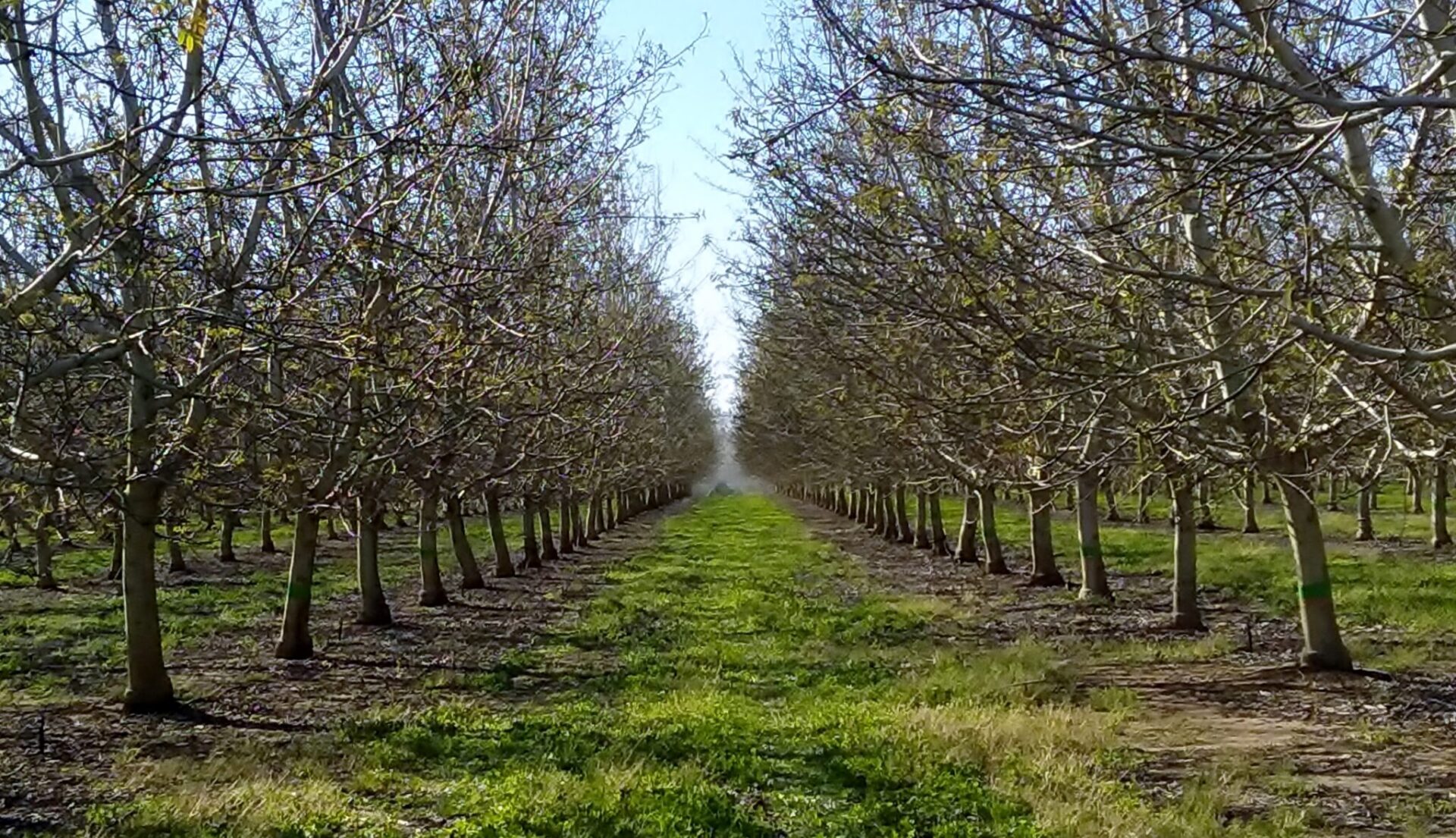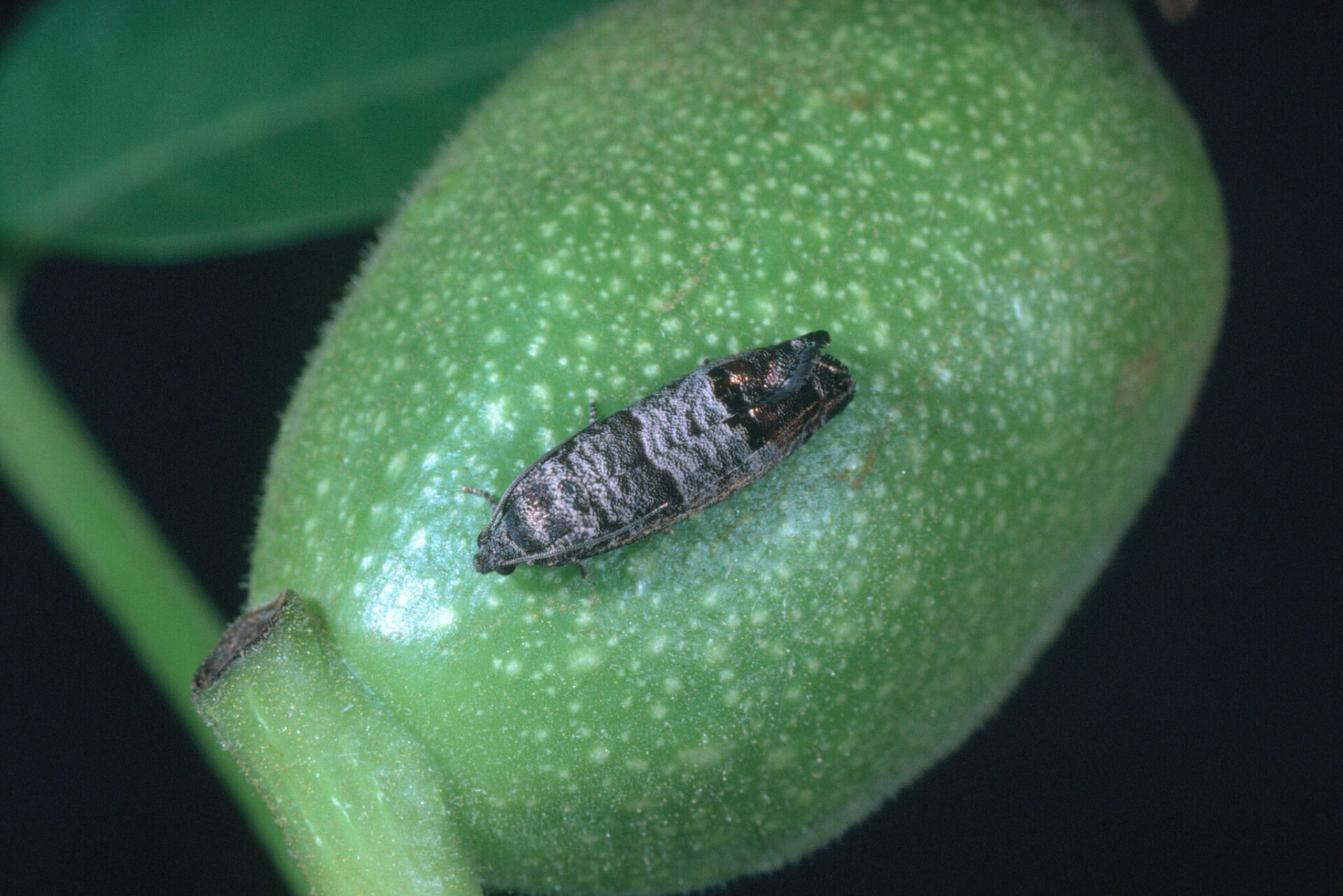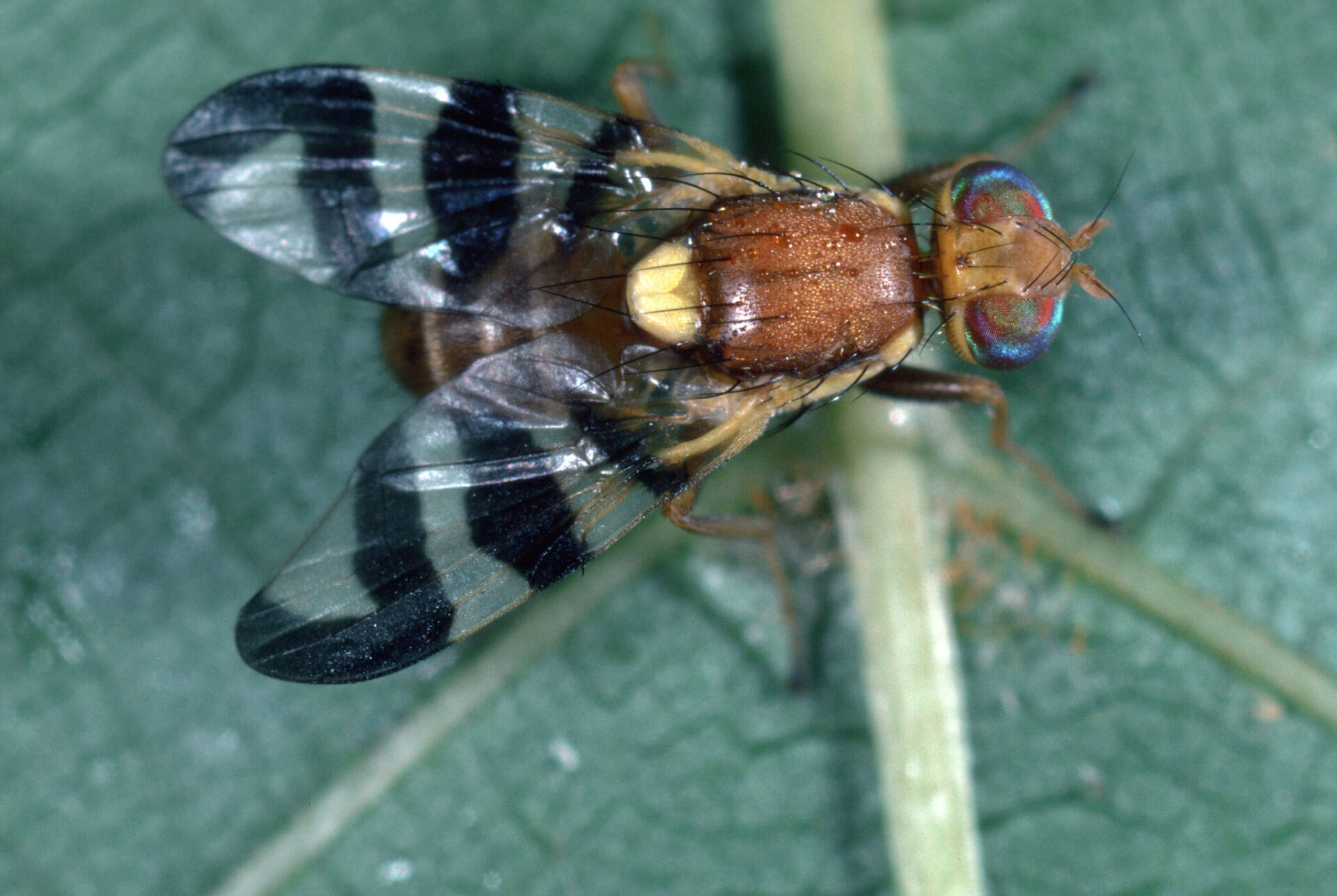
Walnut leaf-out in late winter or early spring signals time to monitor for insect pest invasions. Species of insect pests vary depending on growing region, but growers and managers should be prepared with a plan for monitoring and suppressing populations before they cause economic damage to the crop.
Jhalendra Rijal, UCCE area integrated pest management advisor in San Joaquin, Stanislaus and Merced counties, and Rachel Elkins, UCCE pomology advisor in Lake and Mendocino counties, report very different insect pests that invade walnut orchards where they work.
Rijal’s territory includes many acres of conventionally grown walnuts where codling moth and navel orangeworm (NOW) are primary pests. He is also associate director for Agricultural IPM with the UC Statewide IPM program. Elkins works in an area with more organic walnut production and no pressure from codling moth or NOW. The major walnut pest in that region is walnut husk fly.
Pheromone traps and mating disruption products are the primary IPM tools adopted by walnut growers to track codling moth and NOW seasonal activities and reduce population levels over time. Both should be employed early in the growing season, Rijal advised.
“These tools are critical in controlling codling moth and NOW and they should be placed in orchards in early March,” he said.
In addition to conventional, some mating disruption products can also be used in organic production, but growers will need to make sure the products are approved for organic use, Rijal added.
Codling Moth
Codling moth emergence usually coincides with leaf-out of early walnut varieties, with the first flight of the overwinter generation starting in early March. The first flight has two peaks. Pheromone traps can be used to establish biofix — the first date that moths are consistently found in traps and sunset temperatures have reached 62 degrees F. With biofix established, growers can determine pest seasonal activity and time insecticide sprays if necessary. The UC IPM guidelines note that biofix points can vary from orchard to orchard and each should be monitored separately.
Rijal said all codling moth caught in standard pheromone traps will be males. The combo traps with kairomone lures (CM-DA) attract both males and female moths. These traps should be placed in orchards by mid-March. The traps should be placed in the southeast quadrant of the tree six to seven feet high. Traps with the lures should be hung mid-canopy at a rate of one trap per 25 acres. These kairomone traps are best used in orchards using mating disruption or near orchards using mating disruption. The standard pheromone traps can be used to assess the effectiveness and longevity of mating disruption products as trap shut down is the indicator of mating disruption working. UC guidelines recommend delay of insecticide sprays until the second generation, particularly in later-season walnut varieties.
Besides traps, checking nuts for codling moth damage around the end of each generation by sampling 1,000 nuts is important to assess the potential damage level by this pest.
Mating disruption products should be hung in the upper quarter of the tree canopy before the orchard’s historic date of first flight biofix, which is typically mid-March in the central and southern San Joaquin Valley and early April in northern growing areas.

NOW
Monitoring plays a significant role in NOW management in walnuts, Rijal said. A comprehensive IPM approach includes not only cultural control with orchard sanitation, but use of mating disruption products and timed insecticide sprays if needed. Removal of all tree and ground trash nuts is the important practice for NOW management for all nuts including walnuts.
Female traps including egg traps, pheromone traps and phenyl propionate (PPO) lures can be used to track NOW flights early in the season.
Mating disruption dispensers are typically placed in the orchard prior to the first NOW flight—typically by the end of March.
Rijal, who is part of a UC research project to test mating disruption effectiveness in nut crop orchards, said this tool could help walnut growers minimize the damage by this pest and provide economic savings to the grower in the long run. However, with low nut prices in the current market, use of mating disruption may not be economical if the NOW damage history is negligible.
Pacific Flathead Borer
Another insect pest that has been resurging in California walnuts is the Pacific flathead borer (PFB). Rijal said that adult PFB emerge in summer, and female beetles lay eggs on cracked barks, pruning wounds or other natural openings in the bark of the young trunks as well as mature plant branches and twigs. Young larvae bore into the cambium layer and feed on it. D-shaped exit holes on trees are one sign of adult emergence.
Currently, there are no traps that can be used for monitoring for presence of PFB. Rijal said if an infestation is found, removal of dead or dying plant materials which contain larvae during the winter from the orchard is necessary, and destroying them is important.
Aphids
Two aphid species that can damage walnut trees are the walnut aphid and the dusky-veined aphid. Walnut aphid, once a major pest, is now mostly controlled by an introduced parasitic wasp. Both aphid species overwinter in the egg stage of twigs. Eggs hatch as leaf buds on early walnut varieties begin to open.
Sampling for aphid presence should begin in May and continue throughout shoot and nut growth. Leaflets from ten trees should be collected and checked in the upper surface for dusky-veined aphid and the lower surface for walnut aphid. In the absence of parasitization, treatment should be considered if the average number of aphids is more than 15 per leaflet. If an average of 10% of the leaflets have dusky-veined colonies feeding, an insecticide application should be considered.
Walnut Husk Fly
Walnut husk fly is a mid- to late-season pest in walnuts, causing shell staining by their feeding. Sticky traps placed in the orchard by June 1 will determine if numbers require control measures. Rijal said this pest likes moist, shady areas, and traps should be placed in the trees with that in mind. Traps should be monitored, and if there is a sharp increase in numbers, an insecticide treatment should be considered.
“Spring is pretty quiet around here for walnut growers,” Elkins said. The bonus for this region is that codling moth and NOW are not found there. The majority of the walnut orchards in that northern area are managed with organic production methods, and growers rely on biological control for the pests they do have.
They do deal with walnut husk fly, Elkins said, though pressure is cyclical. Due to limits on the control products they can use, growers rely on monitoring and trapping to determine WHF population levels.
Frosted scale can be an issue in some years, she said, but nurturing a healthy population of parasites that target this pest has kept scale from causing economic damage. Crawlers are treated early in the season before they settle and form covers. Oil treatments at delayed dormancy can also control new generations.











